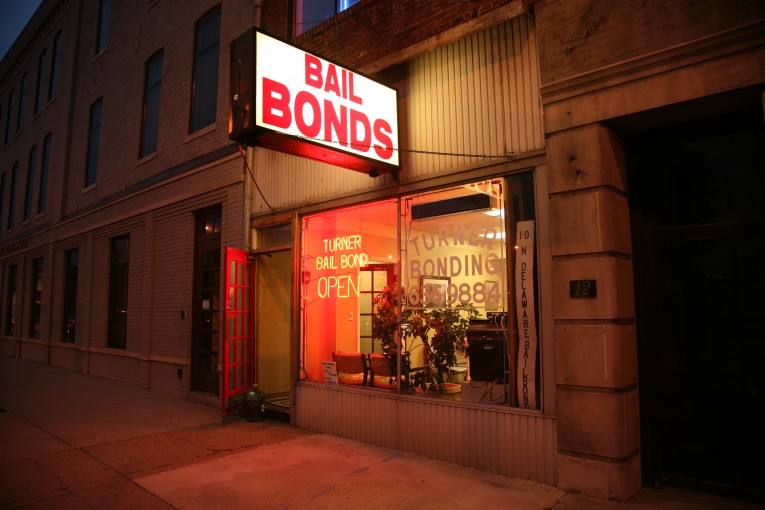

by Tiffany Devlin and Alana Bleimann
CALIFORNIA – Voting has just begun, and California voters are facing a slew of ballot measure – that includes understanding what voting yes, or no, to Proposition 25 means.
A vote for Proposition 25, according to SPUR, would approve Senate Bill 10, a legislative action that replaces the use of money bail with a risk assessment tool to determine the pretrial release of a defendant.
Money bail is used as an incentive for defendants to return to court. If the defendant makes the necessary court appearances, the money is returned. The money is forfeited to the government if the defendant fails to appear.
If the defendant is unable to pay the bail amount assigned, they must wait in jail until their trial. Many defendants awaiting trial are still innocent and run the risk of losing their job and being unable to care for their family once arrested and detained.
The money bail system is known to disproportionately affect communities of color, along with criminalizing poor defendants. Sixty percent of the California county jail population consists of pretrial detainees, where many of them are detained solely for their inability to pay their bail amount, according to the Marin County Bar Association (MCBA).
About 70 percent of those in Sacramento County Jail, for instance, are not convicted but awaiting trial.
Black and Latinx Californians are also overrepresented in pretrial detention. Fifty-nine percent of felony arrestees in larger urban counties in California are detained pretrial compared to 32  percent throughout the rest of the country.
percent throughout the rest of the country.
Additionally, Black men receive 35 percent higher bail compared to white men. Latinx men receive 19 percent higher bail compared to white men.
The purpose of Proposition 25 and SB 10 is designed to remove the financial barrier between a defendant and their pretrial release because of their inability to pay bail. It would also attempt to eliminate the socio-economic and racial disparities prevalent in the assignment of cash bail.
Positively, this proposition would help economically disadvantaged persons to secure their innocence and return home until their trial date.
Negatively, if passed, this proposition would solely rely on risk assessment to determine the status of the defendant.
As of now, the potential risk assessment test would include examining the defendant’s age and past misconduct actions in order to create a unique individual profile for him/her/them.
What is known as “risk scores” determine the defendant’s ability to return home until the scheduled trial date.
According to Brookings, the three “risk scores” include the risk of conviction of any new crime, the risk of conviction of a new violent crime, and the risk to fail to appear in court on their selected day.
In the end, it is the judge’s decision to move forward with these precautions or to ignore them.
Despite the discourse around Proposition 25, there is still a chance that money bail would be eliminated regardless of the rejection of the measure. This is because of a Court of Appeals case called In Re Humphrey, which is currently being examined by the California Supreme Court.
According to the MCBA, In Re Humphrey was about a San Francisco man named Kenneth Humphrey, who was accused of stealing $5 and a bottle of cologne. Humphrey was unable to pay his $350,000 bail, and was ordered to await his trial in jail.
Humphrey appealed, to which the court held that judges in trial court must take into account the defendant’s ability to pay bail, along with non-monetary options for release.
If Proposition 25 passes, In Re Humphrey could be considered moot. If the proposition fails, however, there is still a possibility that the California Supreme Court will consider money bail as unconstitutional through review of In Re Humphrey according to SPUR.
On one hand, Proposition 25 may address this high percentage of pretrial detainees and the racial, socio-economic disparities involved in bail setting.
On the other hand, the danger of only relying on risk assessment tools is very high as these tools are inherently racist and classist, revealing the legal system’s implicit biases.
Many sociologists, including Mahzarin Banaji and Tony Greenwald, believe implicit bias is a set of biases against people of color, poor people, women, etc. held by everyone, whether they know it or not.
For example, when the word “criminal” is written in the media, people often picture a young black man in our minds.
These thoughts and images, they believe, can be completely harmless and unintentional but are hard to avoid and change when everyday interactions, like the media, affirm them Implicit biases, especially to defendants of color in the criminal justice system, can be dehumanizing.
The use of risk assessment tools to determine who stays and who goes out of jails across California allows implicit biases to take form as judges can only determine a defendant’s risk in “free society” based on their identity and crimes they may have made in the past.
This is especially inherent when the defendant has only ever committed one crime and raises the question – how can the legal system determine one’s risk based on the characteristics of one crime?
To sign up for our new newsletter – Everyday Injustice – https://tinyurl.com/yyultcf9
Support our work – to become a sustaining at $5 – $10- $25 per month hit the link:




